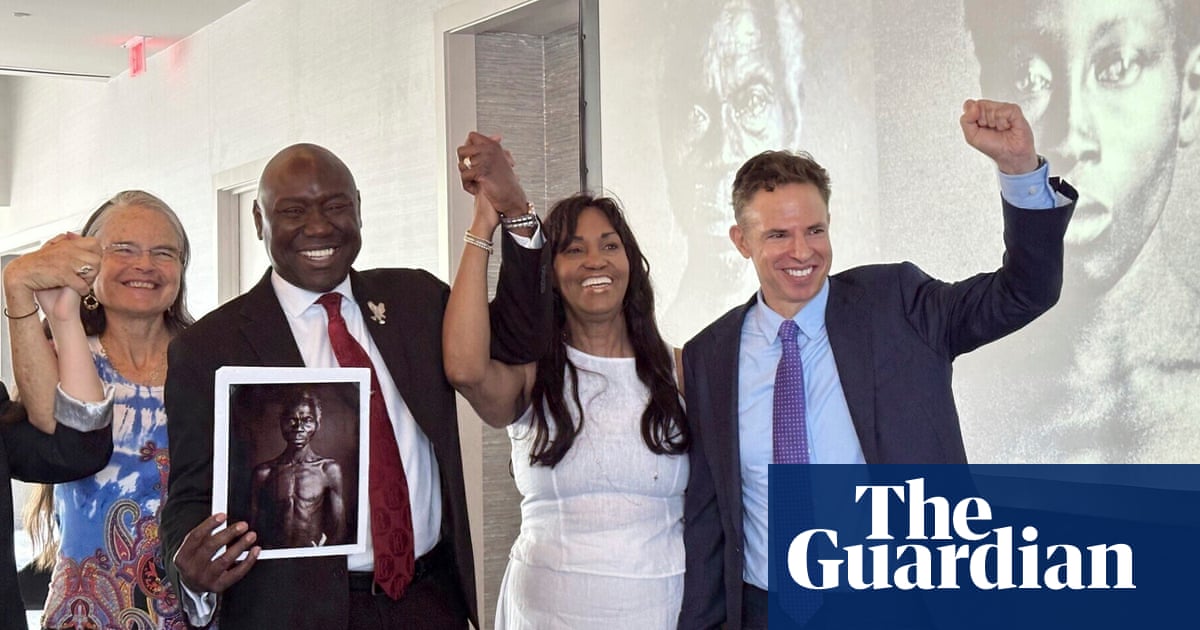Harvard Universityhas agreed to transfer possession of 19th-century photographs of an enslaved man and his daughter to the International African American Museum inSouth Carolinaas part of a settlement with a woman who says she is a descendant of the enslaved individuals.
Tamara Lanier, who lives in Norwich, Connecticut, who says that she is the great-great-great granddaughter of Renty Taylor and his daughter, Delia Taylor – two of the enslaved people featured in the daguerreotypes taken in 1850 that Harvard owned –sued the universityin 2019 over “wrongful seizure, possession and expropriation” of the images, which she says were taken without her ancestors’ consent.
In 2022, the Massachusetts supreme court ruled that Lanier could not claim ownership over the images, since she was not a descendant of the photographer or the photograph’s owners,CBSreported, but it ruled that shecould pursue damages and sue Harvard for emotional distress.
The daguerreotypes, considered among the earliest known photographs of enslaved people, depict Renty Taylor and his daughter, Delia. They were taken in 1850, and were part of a collection commissioned by Harvard professor Louis Agassiz at the time who sought to use them to promote a pseudoscientific, white supremacist theory that falsely asserts that white people are genetically superior.
In the photos, Renty Taylor was stripped nude and photographed, while Delia was naked from the waist up.
This week, the years-long legal battle between Lanier and Harvard came to a close.
As part of the settlement, a lawyer for Lanier said that the 175-year-old images will be transferred from Harvard’s Peabody Museum of Archaeology and Ethnology to the International African American Museum in Charleston,South Carolina, which is the state where Renty Taylor and Delia were enslaved when the photographs were taken.
“This is a moment in history where the sons and daughters of stolen ancestors can stand with pride and rightfully proclaim a victory for reparations,” Laniersaid on Wednesday. “This pilfered property, images taken without dignity or consent and used to promote a racist pseudoscience will now be repatriated to a home where their stories can be told and their humanity can be restored.”
Lanier’s attorney Joshua Koskoff, toldthe Associated Pressthat the resolution is an “unprecedented” victory.
“I think it’s one of one in American history, because of the combination of unlikely features: to have a case that dates back 175 years, to win control over images dating back that long of enslaved people – that’s never happened before,” Koskoff said.
Sign up toHeadlines US
Get the most important US headlines and highlights emailed direct to you every morning
after newsletter promotion
Another of Lanier’s attorneys, Benjamin Crump, also said that the agreement also includes a confidential monetary settlement, according toCBS News.
In a statement, Harvard spokesman James Chisholm told CBS News: “Harvard University has long been eager to place the Zealy Daguerreotypes with another museum or other public institution to put them in the appropriate context and increase access to them for all Americans. Now that this lawsuit has been resolved, Harvard can move forward towards that goal.
“While we are grateful to Ms. Lanier for sparking important conversations about these images, her claim to ownership of the daguerreotypes created a complex situation, especially because Harvard has not been able to confirm that Ms. Lanier is related to the individuals in the daguerreotypes” he added.
